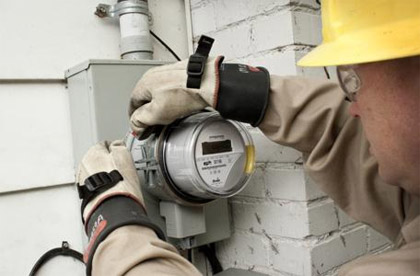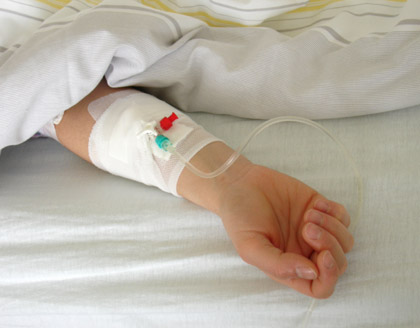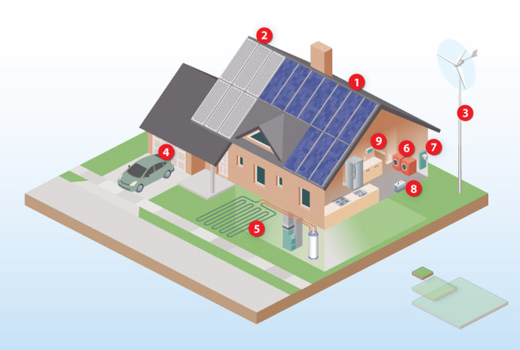The Shadow Side of Smart Meters
Utilities market smart meters as a tool for customers to manage energy usage, to enable automated notification of power outages and to receive bills for actual as opposed to estimated usage. A smart meter measures usage of a utility commodity like electricity, gas and water. However, smart meters pose a number of problems, such as an invasion of privacy, health concerns, security concerns and questionable bills and power conservation. Under normal circumstances, a person simply doesn’t purchase a device he/she questions, but smart meters are installed on a mandatory basis in most states.
Fueled by USD$3.5 billion in 2008 stimulus funds from the U.S. Department of Energy, smart meters are currently being installed at lightning speed on homes, commercial buildings and other multi-dwelling units across the United States. These meters, which are mandatory in most states, use microwave radiation to transmit data from one smart meter to a neighbor’s smart meter and to another smart meter in a wireless mesh within a neighborhood or community until it reaches a repeater. This repeater, which is a collector meter, enables data to eventually reach the utility. This system creates a mesh of microwave radiation inside and outside homes throughout neighborhoods.
Bodies don’t get a break from these invisible radiation transmissions. Smart meters transmit pulsed radiofrequency radiation (RFR) 24 hours per day, seven days per week – as many as 190,000 transmissions per meter per day every day.1 Meters managed by San Diego Gas and Electric Company (SDG&E) transmit messages using RFR on average 1,270 times per meter per day and at a maximum 25,920 times per meter each day.2 From a distance of three feet, a smart meter can emit a cumulative whole body radiation exposure 40 times that of a cell phone, according to Daniel O. Hirsch, nuclear policy expert at the University of California, Santa Cruz (UCSC). From a distance of one foot from a smart meter, cumulative whole body radiation exposure is 360 times that of a cell phone.3
Once residents purchase new appliances with smart chips, their exposure to microwave radiation in the home will substantially increase. Smart chips will record what time the appliance was used, how long it was used and what time the use ended. They will send the data via pulsed radiofrequency radiation to the home’s smart meter. Visualize a spider-web of microwave transmissions as data moves throughout the home from televisions sets, stereos, home entertainment systems, computers, printers, dishwashers, washers and dryers, dishwashers, refrigerators, microwave ovens, toasters, hair dryers, electric toothbrushes, etc., to a home area network associated with the smart meter. During the almost constant smart meter signals, data will travel to the utility using the microwave radiation mesh in the neighborhood.
Privacy Concerns

Photo courtesy of EPB
Smart meters raise significant privacy concerns. According to a February 2012 Congressional Research Service Report entitled Smart Meter: Privacy and Cybersecurity, the Department of Energy reported that by matching data with known appliance load signatures, smart meters will be able to reveal people’s daily schedules, their appliances and electronic equipment, and whether they use certain types of medical equipment.4 Utilities will store data that can discern the behavior of occupants in their homes throughout a period of time. This mandatory device will track more private information than a GPS affixed to a criminal’s car, even though a U.S. Supreme Court Case recently determined that a warrant was needed in the GPS case. It will be extremely tempting for utilities to sell this information to third parties.
Wireless smart meters also pose security concerns. Television shows and media accounts have revealed threats from hacking and terrorism to the smart grid. These concerns are also documented by the Department of Homeland Security and the National Security Agency. Former CIA Director James Woolsey explains the wireless security threat when he comments, “I only hear talk about smart grids and no talk about secure grids. Security seems to be an afterthought and people don’t want to talk about the problem much. But, it is stunning. We have a terrible grid vulnerability problem. . . . As they make it possible for you to turn down your air conditioning at home they ought to make sure they’re not making it easier for Chinese hackers or American hackers or Russian hackers to turn down your air conditioning. There are very few people paying attention to this. The utilities are really asleep at the switch on this, and the public utility commissions are not any better.” (Listen to Woolsey’s entire discussion at www.metacafe.com/watch/4260978/jim_woolsey_grid_security_is_afterthought.)
Health Concerns
Smart meters are causing health problems throughout the United States with reports of sleep problems; stress and anxiety; headaches; ringing in the ears; learning problems; physical weakness; disorientation; eye problems; cardiac symptoms; leg cramps; body pain; nausea; sinus problems; respiratory problems; urinary problems; endocrine disorders; high blood pressure; changes in menstrual cycle; hyperactivity; seizures and recurrence of cancer. (Read more details on health problems.) Independent scientists and medical doctors are taking action.
In May 2011, the World Health Organization determined that radiofrequency electromagnetic fields emitted from wireless devices are a class 2B possible human carcinogen, in the same class as lead, DDT and chloroform. The American Academy of Environmental Medicine opposes the installation of wireless smart meters based on existing medical literature. People across the United States with AMI smart meters on their homes are reporting the above-mentioned symptoms and more, which began occurring after smart meters were installed. Some people are electrosensitive and cannot tolerate any form of pulsed radiofrequency radiation.
No health studies were conducted on exposure to microwave radiation from smart meters before these devices were installed on millions of homes. But, in a memo about smart meters to the Santa Cruz County Board of Supervisors, Health Officer Poki Stewart Namkung, MD, of the Santa Cruz Health

© iStockphoto.com/elkor
Services Agency stated, “Evidence is accumulating on the results of exposure to RF at non-thermal levels, including increased permeability of the blood-brain barrier in the head (Eberhardt, 2008), harmful effects on sperm, double strand breaks in DNA, which could lead to cancer genesis (Phillips, 2011), stress gene activation indicating an exposure to a toxin (Blank, 2011), and alterations in brain glucose metabolism (Volkow, 2011).” More scientific studies about exposure to microwave radiation and health can be found at www.centerforsaferwireless.org.
Questionable Energy Savings & Bills
While utilities claim energy savings from smart meters, the Connecticut Office of the Attorney General issued a letter on February 8, 2011, indicating no overall decreased energy usage in a pilot test with 10,000 commercial and residential smart meters as compared to existing analog meters. A similar study covering one year of smart meter usage in England came to the same conclusion.
According to reports in California, “There are widespread reports of excessive charges due to malfunctioning smart meters. In Bakersfield, Calif., where Pacific, Gas & Electric (PG&E) started installing the first smart meters, more than 100 people attended a meeting held by State Sen. Florez to complain about absurd electric bills. Those with new smart meters had bills 200 to 400 percent higher with no increase in power use as compared to the same months of the previous year.”
Americans have the right to maintain privacy in their homes without outside forces, visible or invisible, penetrating their homes. Citizens can either accept this potential surveillance device and allow biological experiments on their families, or they can reject these mandatory meters and join the movement to develop a smarter grid. Regardless, everyone deserves the right to know the shadow side of smart meters.





























